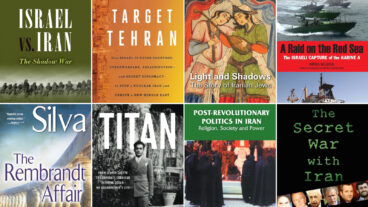Some 120 orphans from the genocide in Rwanda have found a new home for themselves at the Agahozo-Shalom Village, which is modeled on a similar youth village in Israel. After the Holocaust in Europe, thousands of young Jewish orphans had nowhere to go. No parents, no homeland, no welcome mat laid out for them anywhere.
A similar event happened in Africa not long ago: After the Rwandan genocide in 1994, over one million babies and youth were orphaned. Today, a new youth village based on an Israeli model for integrating Holocaust orphans into society after the war, is about to change the face of education in Rwanda.
The village, which was set up by American, Anne E. Heyman, from Manhattan, intends to train youth to rebuild Rwanda’s broken society, by using a number of ideas already successfully put into practice in Israel.
Back in the early 1950s, a youth village called Yemin Orde (Hebrew for “in the memory of Orde,” British Major General Orde Charles Wingate), was built in Israel to house and give a home to new immigrants and orphans created by the Holocaust in Europe. Yemin Orde gave these youth a family and a home, and the village today still operates and stands as a model for how societies should treat, and raise its neglected and orphaned children.
Like a light bulb switching on in the dark, it was the model of this Israeli youth village that Heyman turned to when she started thinking about ways to help Rwandan society overcome the trauma of genocide.
Fixing the world
The vision began in 2005, and in December last year, Heyman reports, the new youth community, Agahozo-Shalom Village (a hybrid of “dry their tears,” from the local language and “live in peace” in Hebrew), was built and began operating.
One hundred and 20 young Rwandans are now learning in the youth village, which Heyman directs. The first class will graduate in 2012, and eventually the village plans to house 500 youth at a time.
Just as at the village in Israel, guides, teachers and housemothers in Rwanda will teach the kids about “Tikkun Olam,” a Jewish idea, but a universal concept for fixing the world to make it a better place for all.
Despite the tragedy Jews faced during the Holocaust, the accepted notion is that one can continue to fight to make the world a better place.
It was only after Heyman had started working on the project that she noticed the parallels between Rwandans and Jews from the Holocaust, she tells ISRAEL21c. In 1994, Rwandan genocide left more than 800,000 Tutsis dead, and at the same time about 15 percent of the country’s population became instant orphans and lost their homes.
The aim is that this small Rwandan youth village and school will be the nucleus of change in Rwanda, where most of its young have been orphaned, or made homeless. A unique and ambitious project, the village in Rwanda will serve as a model for caring for youth across Rwanda, Africa and beyond, to wherever there are traumatized youth who need a place to call home, according to organizers.
“It is a model in many areas,” Heyman tells ISRAEL21c. “It is a model for dealing with traumatized youth. A model for a formal education system [in Rwanda]. It’s a model for reforestation. A model for organic farming with modern farming methodologies. And a model for training kids in computer technologies.”
With two Israeli staff members stationed in Rwanda, some of the professional crew of about 60 (including cooks, and administrative staff) come to Israel for training at the Feuerstein Institute. Other models of development in agriculture and computer technologies are fashioned after the Israeli approach, as well, although the majority of the funding comes from America, Heyman explains.
Tapping into Israeli technology
Closer by plane to Israel than to America, “We’re tapping into Israeli technology,” says Heyman, while “the youth village itself is based on the youth village experience in Israel.”
With the first graduating class expected for 2012, Heyman is looking forward to seeing the young Rwandans get the skills they need to go on to higher education, such as university. This small school, she believes, can give Rwanda a fighting chance to rebuild itself.
Long-term volunteers, ones who can commit to up to a year in Rwanda, are encouraged to contact the organization. And, “in order to allow the children time to settle in to their new home and get to know those who will be living with and caring for them we have decided not to old a “grand opening” until June,” reports Heyman. By then, she expects all phases of building and planning to be complete, with the children settled in and ready for the opening ceremonies.













